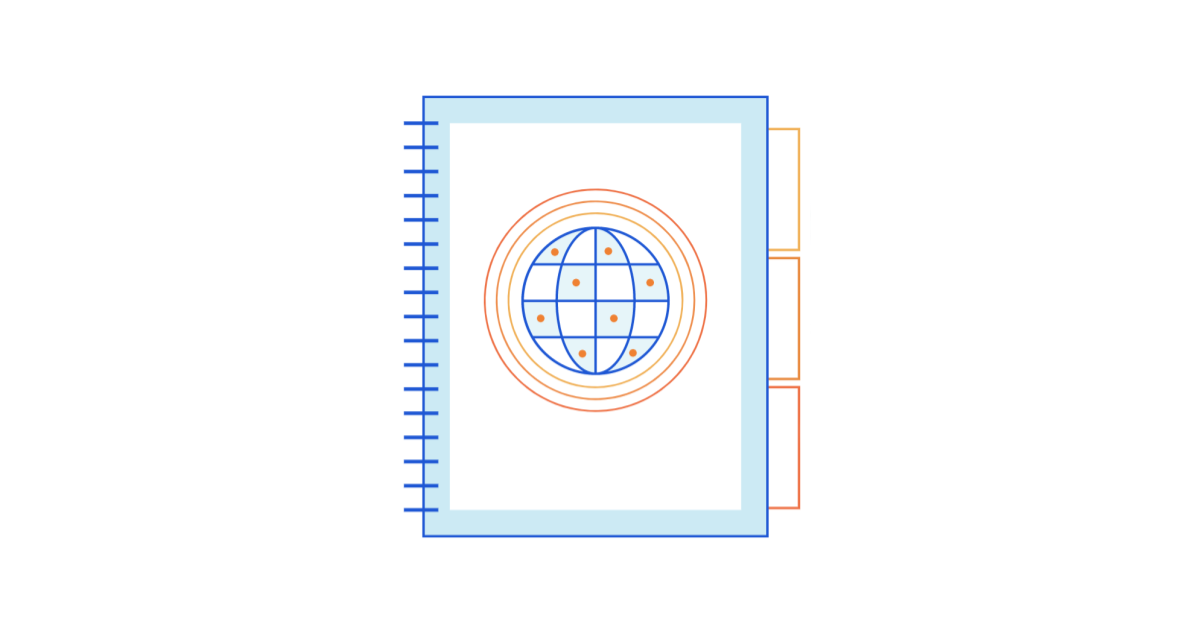Network Break 314: Juniper Buys Apstra For IBN; Aruba Targets The Data Center With Fabric Software
Today's Network Break analyzes Juniper's acquisition of Intent-Based Networking startup Apstra, HPE's Aruba targets the data center with new switches and fabric software, and the US FTC sues Facebook for violating anti-trust laws. We also cover new products from Arista, Aryaka, and Gluware, a trio of Cisco acquisitions, and more tech news.Network Break 314: Juniper Buys Apstra For IBN; Aruba Targets The Data Center With Fabric Software
Today's Network Break analyzes Juniper's acquisition of Intent-Based Networking startup Apstra, HPE's Aruba targets the data center with new switches and fabric software, and the US FTC sues Facebook for violating anti-trust laws. We also cover new products from Arista, Aryaka, and Gluware, a trio of Cisco acquisitions, and more tech news.
The post Network Break 314: Juniper Buys Apstra For IBN; Aruba Targets The Data Center With Fabric Software appeared first on Packet Pushers.
Pulling Back the Curtains
One of the major sources of complexity in modern systems is the simple failure to pull back the curtains. From a recent blog post over at the ACM—
Yegor describes three different reactions when a coder faces something unexpected when solving a problem.
Throw in the towel. Just give up on solving the problem. This is fairly uncommon in the networking and programming fields, so I don’t have much to say here.
Muddle through. Just figure out how to make it work by whatever means necessary.
Open the curtains and build an excellent solution. Learn how the underlying systems work, understand how to interact with them, and create a solution that best takes advantage of them.
The first and third options are rare indeed; it is the second solution that seems to dominate our Continue reading
The Week in Internet News: Facebook Faces U.S. Antitrust Lawsuits

Do not pass go: The U.S. Federal Trade Commission and attorneys general from 46 states have filed antitrust lawsuits, charging the social media giant Facebook of expanding its monopoly position by acquiring potential rivals including WhatsApp and Instagram, The Hill reports. It’s possible that Facebook would be required to sell off those acquisitions. Facebook has noted that both acquisitions were approved by regulators at the time.
Get off my phone: The government of China has ordered several apps, including one from TripAdvisor, to overhaul their products in an alleged crackdown on pornography and other “improper” content, The Associated Press says. In the meantime, China’s National Cyberspace Administration ordered the removal of 105 apps including TripAdvisor from app stores. The agency said there were public complaints about obscene, pornographic, and violent information as well as fraud, gambling, and prostitution.
Cookie spies: The government of France’s data privacy agency has fined Google US$121 million and Amazon $42 million for breaking the country’s rules on tracking cookies, Reuters says. The Google fine was the largest ever from the French Commission Nationale de l’Informatique et des Libertés. The CNIL said the companies’ French websites didn’t seek the prior consent of visitors before advertising Continue reading
Improving Cloudflare’s products and services, one feature request at a time


I started at Cloudflare in April 2018. I was excited to join an innovative company that operates with integrity and takes customer needs into account when planning product roadmaps. After 2.5 years at Cloudflare, this excitement has only grown, as it has become even clearer that our customers’ feedback is essential to our business. At an all-hands meeting this November, Michelle Zatlyn, our co-founder and COO, said that “every time we see things and approach problems from the lens of a customer, we make better decisions.” One of the ways we make these decisions is through Customer Success Managers funneling our customers’ feedback to our product and engineering teams.
As a Strategic Customer Success Manager, I meet regularly with my customers to better understand their experience with Cloudflare and work cross-functionally with our internal teams to continually improve it. One thing my customers often mention to me, regardless of industry or size, is their appreciation that their feedback is not only heard but understood and actioned. We are an engineering-driven company that remains agile enough to Continue reading
An overview of end-to-end entity resolution for big data
An overview of end-to-end entity resolution for big data, Christophides et al., ACM Computing Surveys, Dec. 2020, Article No. 127
The ACM Computing Surveys are always a great way to get a quick orientation in a new subject area, and hot off the press is this survey on the entity resolution (aka record linking) problem. It’s an important part of many modern data workflows, and an area I’ve been wrestling with in one of my own projects.
Entity Resolution (ER) aims to identify different descriptions that refer to the same real-world entity appearing either within or across data sources, when unique entity identifiers are not available.
When ER is applied to records from the same data source it can be used for deduplication, when used to join records across data sources we call it record linking. Doing this well at scale is non-trivial; at its core, the problem requires comparing each entity to every other, i.e. it is quadratic in input size.An individual record/document for an entity is called an entity description. A set of such descriptions is an entity collection. Two descriptions that correspond to the same real world entity are called matches or Continue reading
Business without labour, Automation without workers
 First posted in Human Infrastructure Magazine in March 2020 Its fashionable in Enterprise IT is to reduce headcount. This reflects a wider business fashion of ‘business without labour’ that chases the dream of ‘profits without cost’. You see, investors watch ‘revenue per employee’ or ‘profit per employee’ and IT managers feel pressure to ditch people […]
First posted in Human Infrastructure Magazine in March 2020 Its fashionable in Enterprise IT is to reduce headcount. This reflects a wider business fashion of ‘business without labour’ that chases the dream of ‘profits without cost’. You see, investors watch ‘revenue per employee’ or ‘profit per employee’ and IT managers feel pressure to ditch people […]
Partnering with Global Cyber Alliance on Open Standards, Routing Security, and More

Our work is strengthened, and our impact magnified, when we collaborate with partners to build a secure and trustworthy Internet for all. That’s why we’re proud to announce we’ve entered into a Memorandum of Understanding (MoU) with the Global Cyber Alliance (GCA) to work together on routing security, open Internet standards, and other areas of joint interest. The Global Cyber Alliance is an international, cross-sector effort dedicated to reducing cyber risk and improving our connected world.
This relationship is not new. The Internet Society and GCA have a long history of working together, from promoting email and Internet of Things (IoT) security to improving routing security, increasing deployment of open standards, and helping stakeholders participate meaningfully in the multistakeholder management of core Internet resources.
Both organizations have emphasized the importance of research, capacity building, and advocacy to develop key technologies and policies. This work helps promote the Internet, its resources, the need for vigilant user-enabled security, and the need for the Internet to remain open, inclusive, and an enabler of opportunities.
“We’re proud to extend and formalize our long-standing relationship with GCA to create real change for network operators and Internet users around the globe. By joining forces, we can promote enhanced Continue reading
Repost: Drawbacks and Pitfalls of Cut-Through Switching
Minh Ha left a great comment describing additional pitfalls of cut-through switching on my Chasing CRC Errors blog post. Here it is (lightly edited).
Ivan, I don’t know about you, but I think cut-through and deep buffer are nothing but scams, and it’s subtle problems like this [fabric-wide crc errors] that open one’s eyes to the difference between reality and academy. Cut-through switching might improve nominal device latency a little bit compared to store-and-forward (SAF), but when one puts it into the bigger end-to-end context, it’s mostly useless.
Repost: Drawbacks and Pitfalls of Cut-Through Switching
Minh Ha left a great comment describing additional pitfalls of cut-through switching on my Chasing CRC Errors blog post. Here it is (lightly edited).
Ivan, I don’t know about you, but I think cut-through and deep buffer are nothing but scams, and it’s subtle problems like this [fabric-wide crc errors] that open one’s eyes to the difference between reality and academy. Cut-through switching might improve nominal device latency a little bit compared to store-and-forward (SAF), but when one puts it into the bigger end-to-end context, it’s mostly useless.
An overview of end-to-end entity resolution for big data
An overview of end-to-end entity resolution for big data, Christophides et al., ACM Computing Surveys, Dec. 2020, Article No. 127
The ACM Computing Surveys are always a great way to get a quick orientation in a new subject area, and hot off the press is this survey on the entity resolution (aka record linking) problem. It’s an important part of many modern data workflows, and an area I’ve been wrestling with in one of my own projects.
Entity Resolution (ER) aims to identify different descriptions that refer to the same real-world entity appearing either within or across data sources, when unique entity identifiers are not available.
When ER is applied to records from the same data source it can be used for deduplication, when used to join records across data sources we call it record linking. Doing this well at scale is non-trivial; at its core, the problem requires comparing each entity to every other, i.e. it is quadratic in input size.
An individual record/document for an entity is called an entity description. A set of such descriptions is an entity collection. Two descriptions that correspond to the same real world entity are called matches or Continue reading